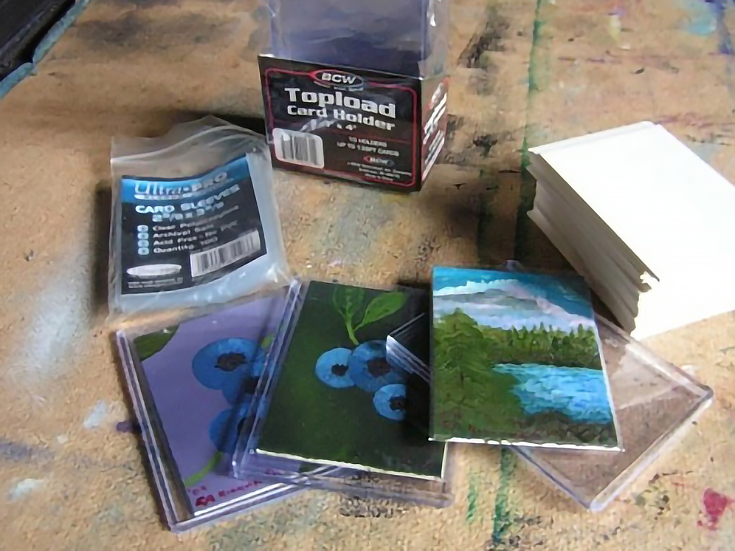When I was collecting sports cards nearly a decade ago, I had no idea that a lot of the packs I opened contained something I could have used now.
The bigger packs of some brands, especially Donruss, often contained a thick dummy card—just a nice pure white piece of cardboard—which was used to make the buyer think that the pack possibly contained a memorabilia card (one that had a swatch of jersey, or slice of bat, possibly with an autograph).
I threw away hundreds of these “useless” pieces of cardboard, but with the thought that I might be able to use them someday, I did manage to hang onto a few dozen.
When I took up oil painting, I noticed the small size of some of the artwork for sale online. Some were called art cards, and were the size of a baseball card. That turned on the “idea switch” in my head, and my project began.
The first question I asked was, “How can I keep these little canvasses from moving around, while still being able to use them on my easel?”
My solution was a scrap of thick, pressed-board paneling which was the size of a larger canvas and big enough to be held by my easel. On the piece of paneling I made a bracket around 3 sides of a blank card by using a household staple gun.
Placing a few blank cards on top of each other helped me gauge the depth of the staple penetration I would need. I wanted the staples to hold the card completely still while I was painting on it, but not be a problem when removing a dry piece of artwork.
If you do this for your own art cards, you might want to create multiple brackets (as I did, above) so you can work on many small paintings at one time.
I’d suggest setting up a few in landscape format and a few in portrait format, or just make a couple of panels, one for several landscapes and one for several portraits. Since your wet artwork is perfectly secure you won’t have to touch it, yet you can change your bracket panels and work on another set of miniatures while your first group dries.
Before I start painting in oils on my white art cards, I cover them on one side with acrylic paint. This gives them a protective layer between the oil paint and cardboard, as well as a little tooth. After the acrylic paint has dried, I proceed with oils.
As a bonus, since these miniature paintings are the exact size of a standard baseball card, you can use card sleeves or those clear card cases made for sportscards (shown below) to hold your artwork after it has completely dried.
Cases and card sleeves can be found at larger department stores or sportscard stores anywhere. (The white cardboard, however, may be a little harder to find.)
To learn more about Roger A. Kinnunen or his art, please visit his website.
This post may contain affiliate links.



